Mastitis can occur almost anytime during the breastfeeding experience, but every year around the Holidays, lactation consultants see a spike in mastitis. Usually, it starts around mid-November and peaks at the end of December. During the holidays, everyone becomes very busy. New parents are more vulnerable to stress and physical fatigue because they try to do myriad activities. If a parent has multiple children, the problem is compounded by the number of older children they have because family and friends assume that an experienced parent doesn’t need help. Let’s go over mastitis basics, what to look for, when to call for help, and how to prevent it.
What is Mastitis?
Mastitis is defined as a preventable but common lactation complication that leads to an inflammation of breast tissue that may or may not lead to an infection.
According to the Academy of Breastfeeding Medicine’s most recent protocol released in 2022, Mastitis is a common lactating parent complication of lactation and contributes to early cessation of breastfeeding. In the past, mastitis has been regarded as a single pathological entity in the lactating breast. However, scientific evidence now demonstrates that mastitis encompasses a spectrum of conditions resulting from ductal inflammation and stromal edema (supportive tissue). If ductal narrowing and alveolar congestion (milk storage tissue) are worsened by overstimulation of milk production, then inflammatory mastitis can develop, and acute bacterial mastitis may follow. - source Academy of Breastfeeding Medicine Clinical Protocol #36
Simply put, when you skip feedings and your breasts stay engorged, it causes extreme pressure in your breast tissue. This then can cause swelling in the breast, preventing milk removal from ducts that have narrowed due to the swelling. Mastitis can happen anytime after the initial transition of milk from colostrum to a mature milk supply. It can occur when you wean abruptly, with incomplete milk removal, with oversupply, or during sudden changes in breast usage among other things. With proper management in case, it can resolve within a few days.
What causes mastitis during the holidays?:
Over-engorged breasts, going way too long between feedings
Over-use of a pacifier to stretch out feedings so you do not have to stop shopping or an important activity at home/ in public to feed the baby
Using bottles to feed your baby in public or at family gatherings instead of breastfeeding and waiting until you get home to nurse or pump
Planning large family events or parties without adequate help
Trying to do it all by yourself: decorating, shopping, preparing meals, etc.
Enjoying holiday parties for 4 or more hours without pumping or using hand expression to relieve the pressure in your breasts
Prolonged separation of breastfeeding parent and baby
How to prevent mastitis at any time of the year:
Nurse regularly, which for most in the early weeks is 8 or more times in 24 hours.
Plan to pump or express milk from your breasts for long separations from your baby.
Watch your breasts for engorgement. Feed your baby promptly if they feel too full.
Don’t try to prolong feeding especially with young infants. This can also cause poor weight gain with “polite” babies who will not always cry when they are hungry.
Remember the golden breastfeeding rule: Crying is a late indicator of hunger.
Delegate jobs and a to-do-list. Don’t let others push everything onto you at home or work.
Avoid sleeping on your stomach. Do not wear tight, constricting clothing or bras.
Get plenty of sleep and try to stick to a healthy diet.
What are the physical signs of mastitis, what should I watch out for?:
Chills, headache, flu-like symptoms, or a fever over 100.4°F
A painful swelling or hard area in your breast that is not going down after a feeding or pumping
A red, tender, or painful area(s) on your breast that is hot to the touch
Red streaks that radiate over your entire breast or large parts of it
Your baby being reluctant or refusing to nurse on the affected side
Most mastitis is not infective. You can help your mastitis quickly resolve by:
Getting plenty of rest
Eating healthy foods to boost your immune system and staying hydrated
Sleep without a bra. During the day wear loose-fitting bras or skip wearing one entirely
Use ice-cold compresses on your breasts several times per day to help reduce swelling
Do not use deep pressure or kneading massage. Rather, use lymphatic drainage massage to further reduce fluids which in turn reduces swelling.
Use ibuprofen for pain and reduction of swelling. They are safe to take while breastfeeding as long as your doctor is ok with general use. Unrelieved pain can reduce your ability to produce milk.
Consider taking sunflower lecithin supplements which can aid in milk flow.
Most babies don’t mind the saltier taste of breast milk when their parent has mastitis while others will refuse to nurse. If your baby refuses to nurse on the affected side, pump or hand express following your regular routine (don’t increase the number of sessions to “empty”). Tip: Start on the other unaffected breast first and switch to the mastitis side to encourage your baby to keep nursing.
Do not abruptly wean, this will make your mastitis much, much worse!!!
When should I call the doctor?:
You should call your doctor if you feel you are worse instead of better after 24 hours or have gotten rapidly worse quickly with a fever over 101.8° F.
When to contact a lactation consultant:
If you cannot get your breasts to drain even using a pump or hand expression
If you have pus leaking out your nipple or a hole that has formed in the side of your breast
If you are not getting better
If you have large, painful lumps you can feel in your breast that are not draining and are getting larger
If you find it too painful to nurse your baby
Anytime you want safe alternatives to treat non-infective mastitis that is lingering

